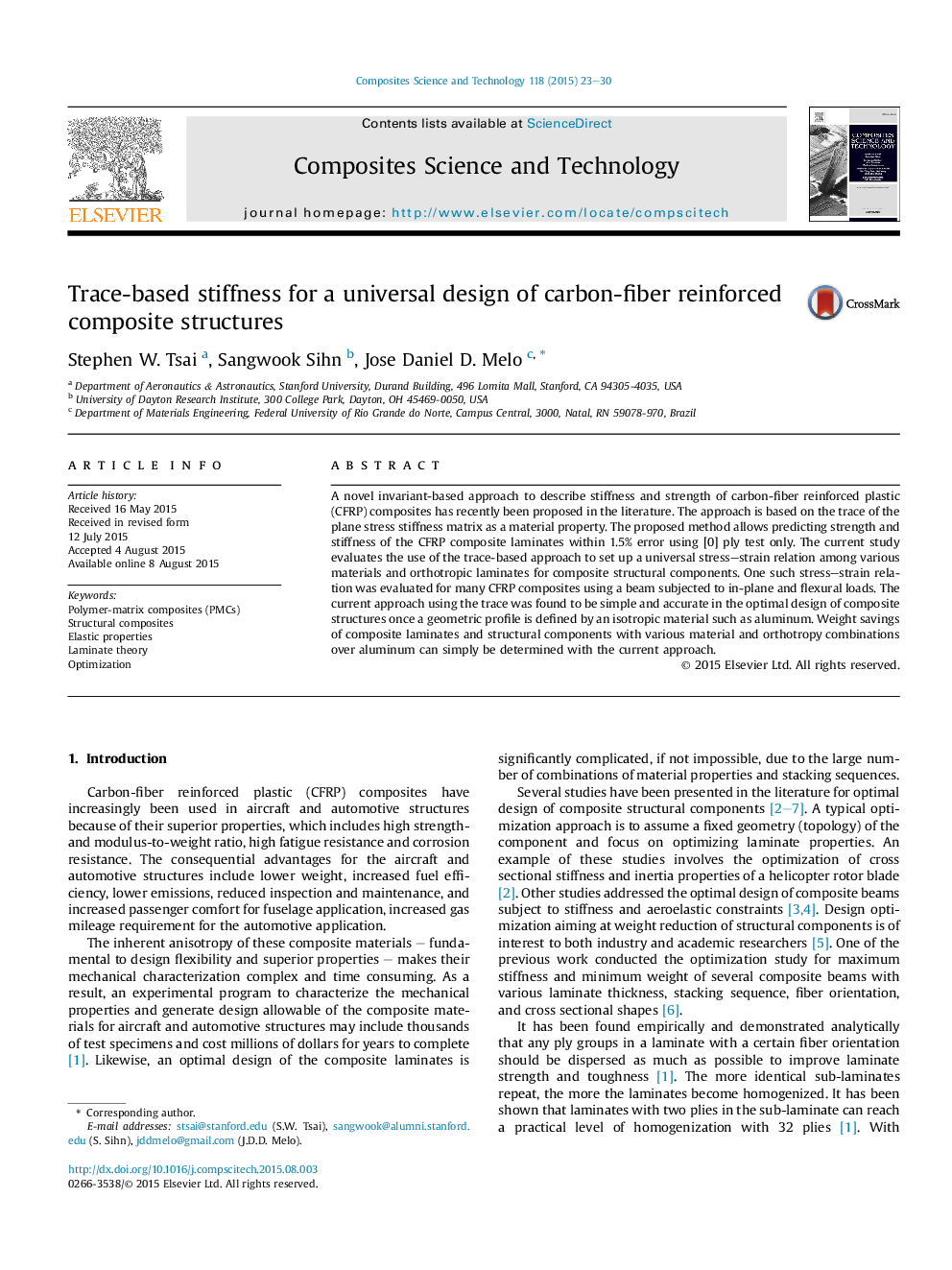| Article ID | Journal | Published Year | Pages | File Type |
|---|---|---|---|---|
| 7215243 | Composites Science and Technology | 2015 | 8 Pages |
Abstract
A novel invariant-based approach to describe stiffness and strength of carbon-fiber reinforced plastic (CFRP) composites has recently been proposed in the literature. The approach is based on the trace of the plane stress stiffness matrix as a material property. The proposed method allows predicting strength and stiffness of the CFRP composite laminates within 1.5% error using [0] ply test only. The current study evaluates the use of the trace-based approach to set up a universal stress-strain relation among various materials and orthotropic laminates for composite structural components. One such stress-strain relation was evaluated for many CFRP composites using a beam subjected to in-plane and flexural loads. The current approach using the trace was found to be simple and accurate in the optimal design of composite structures once a geometric profile is defined by an isotropic material such as aluminum. Weight savings of composite laminates and structural components with various material and orthotropy combinations over aluminum can simply be determined with the current approach.
Keywords
Related Topics
Physical Sciences and Engineering
Engineering
Engineering (General)
Authors
Stephen W. Tsai, Sangwook Sihn, Jose Daniel D. Melo,
